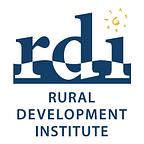We Can Build on This: Discovering Community Capitals
By Meghan Wrathall
May 11, 2017
Rural communities are usually told what they don’t have. What if that idea is turned on its head and we focus on the resources that they do have?
These resources that are held by communities are called community capitals. The use of community capitals is an empowering concept because the first step is to look at what communities have, rather than what they lack and need.
What are Community Capitals?
Cornelia and Jan Flora have derived seven types of community capital: Social Capital, Cultural Capital, Human Capital, Political Capital, Natural Capital, Built Capital, and Financial Capital.
Community Capital Definitions
Social
Trust, norms of reciprocity, network structure, group membership, cooperation, common vision and goals, leadership, acceptance of diversity
Cultural
Values, heritage recognition, and celebration
Human
Population, education, skills, health, creativity, youth, diverse groups
Political
Level of community organization through the use of government; ability of government to garner resources for the community
Natural
Air, land and water quality, natural resources, biodiversity, scenery
Built
Housing, transportation infrastructure, telecommunications infrastructure and hardware, utilities, buildings
Financial
Tax burden/savings, state and federal tax monies, philanthropic donations, grants, contracts, regulatory exemption, investments, reallocation, loans, poverty rates
Social, human, cultural and political capitals are considered human based capitals, while natural, financial, and built capitals are material based capitals. Community capitals are not isolated entities, rather they interact with each other and can be used to maintain and create assets and resources. Regardless of the level of poverty or wealth, each community has resources that can be used to work towards its own development and well-being.
Social, human, cultural and political capitals are considered human based capitals, while natural, financial, and built capitals are material based capitals. Community capitals are not isolated entities, rather they interact with each other and can be used to maintain and create assets and resources. Regardless of the level of poverty or wealth, each community has resources that can be used to work towards its own development and well-being.
Why are Community Capitals Important?
The Community Capacity framework was developed to better understand how communities function, and community capitals are the building blocks for this framework. Implementing a community capacity framework provides a common definition which is useable by academics, professional, and community members alike.
The Community Capacity framework is a bottom-up approach that identifies the resources currently held by the community and uses these resources to develop and build the community. A bottom-up approach is useful in a rural context because with the downsizing of our rural communities, it is more empowering to identify and use the resources possessed by a community rather than listing all the resources the community does not have.
Community Capacity framework literature provides evidence of capital/resource development and exposes interactions among the capitals that can lead to a ‘spiraling-up’ of positive community development.
Why use Community Capitals and Information and Communication Technology (ICT)?
For this project, we chose to identify community capitals that are impacted by broadband use and to assess potential benefits of that use. Such an approach is advantageous when looking at the uses and benefits of ICTs in rural communities because ICTs present new opportunities for development. The economy, social well-being, transportation and engagement are among many elements of community that can benefit from ICTs. Such assets are items of positive value in a community and serve as an advantage or capacity for that community to use in development.
If you are interested in more information:
Emery, M. and Flora, C. (2006). Spiraling-up: Mapping community transformation with community capitals framework. Community Development: Journal of the Community Development Society. 37(1)
Flora, C.B., Emery, M., Fey, S., & Bregendahl, C. (2005). Community capitals: A tool for evaluating strategic interventions and projects. Ames IA.: North Central Regional Center for Rural Development
Flora, C. B., & Flora, J. L. (2013). Rural Communities: Legacy and Change. Boulder, CO: Westview Pres
Gutierrez-Montes, I., Emery, M., & Fernandez-Baca, E. (2009). The sustainable livelihoods approach and the community capitals framework: The importance of system-level approaches to community change efforts. Community Development: Journal of the Community Development Society. 40(2).
Mattos, D. (2015). Community capitals framework as a measure of community development Cornhusker Economics.
Ryser, L. and Halseth, G. (2014). On the edge in rural Canada: The changing capacity and role of the voluntary sector. Journal of Nonprofit and Social Economy Research. 5(1). Pp. 41–56.
Visit https://www.brandonu.ca/rdi/ to learn more about rural research
